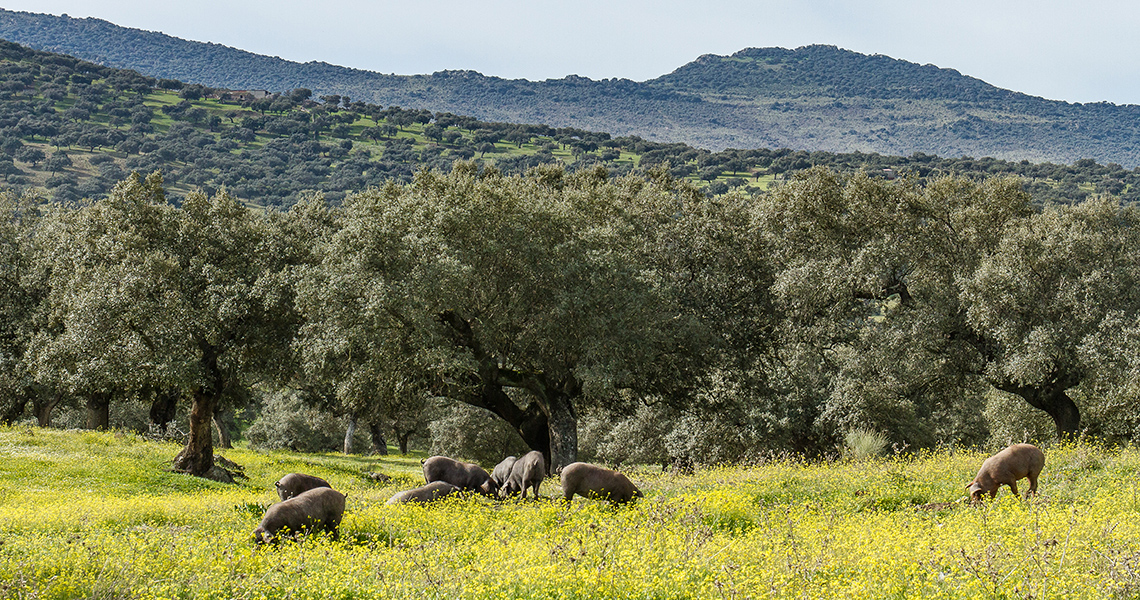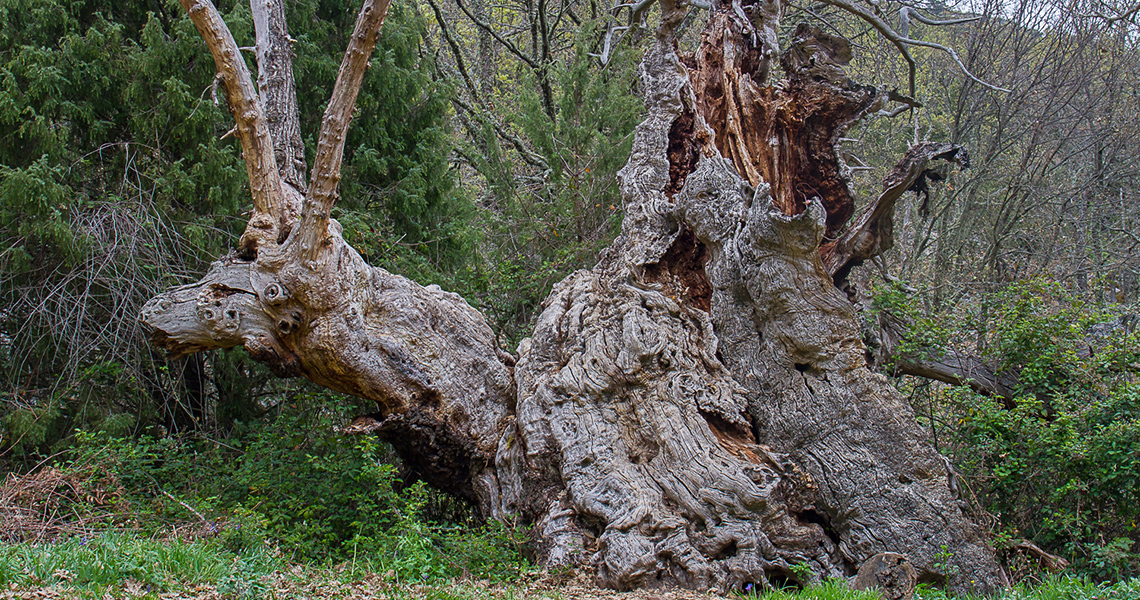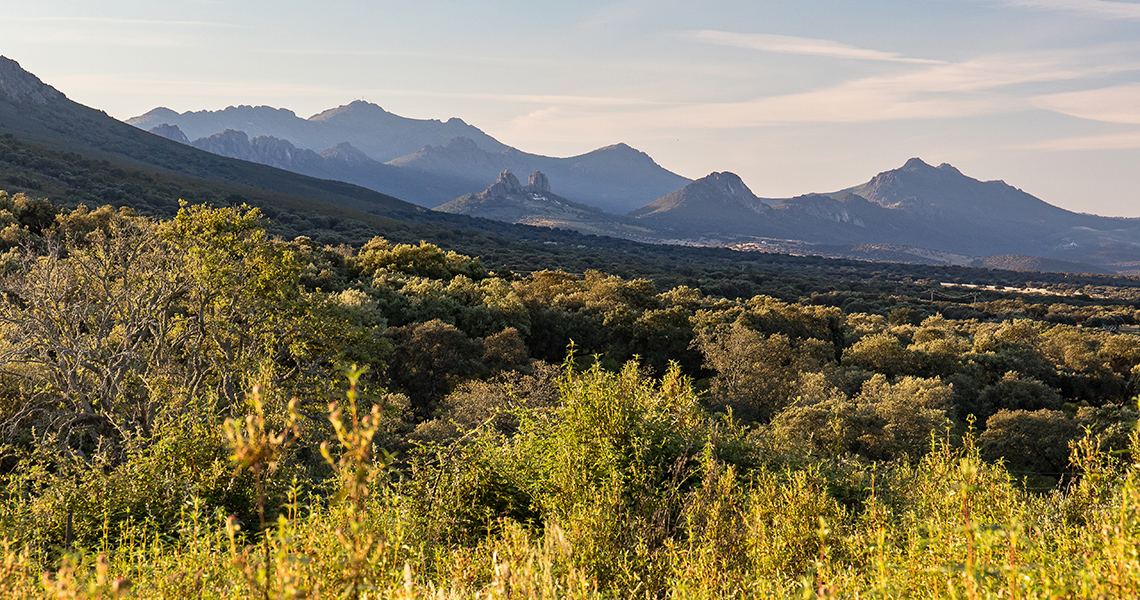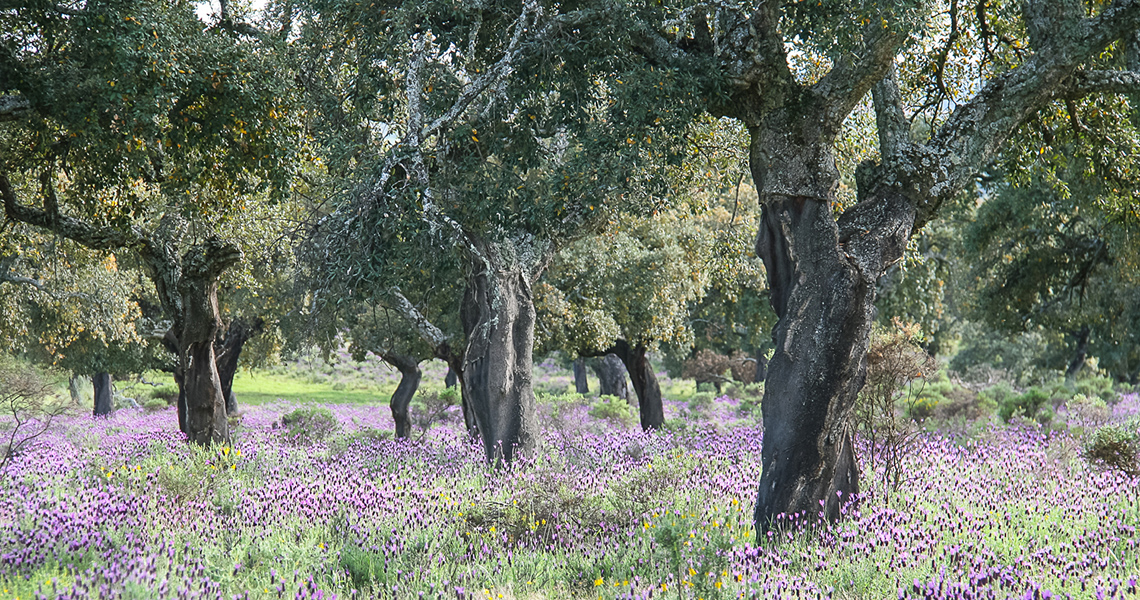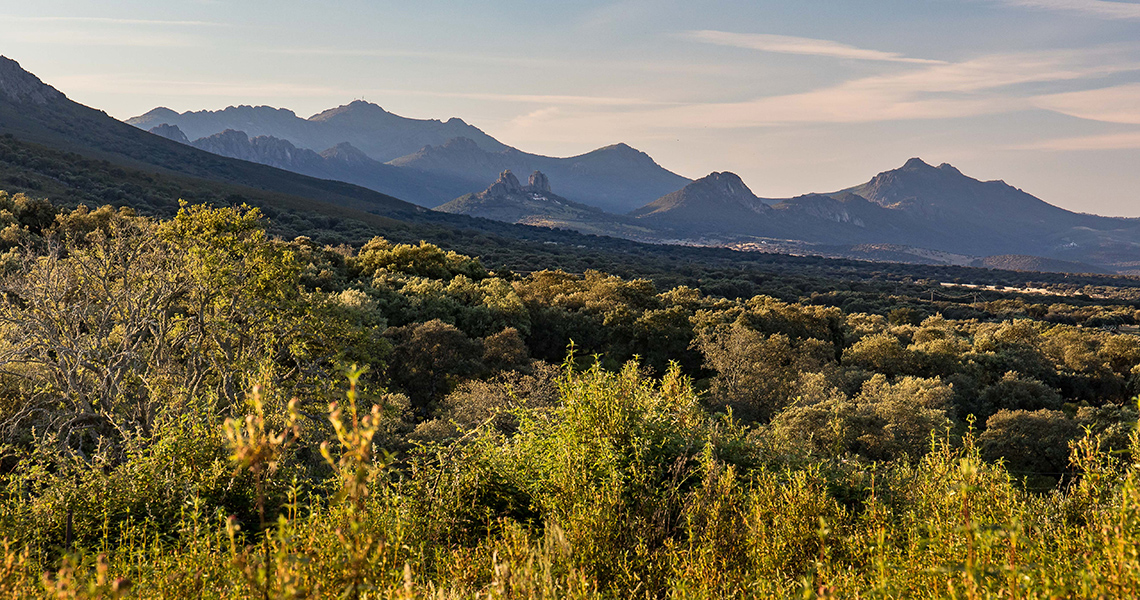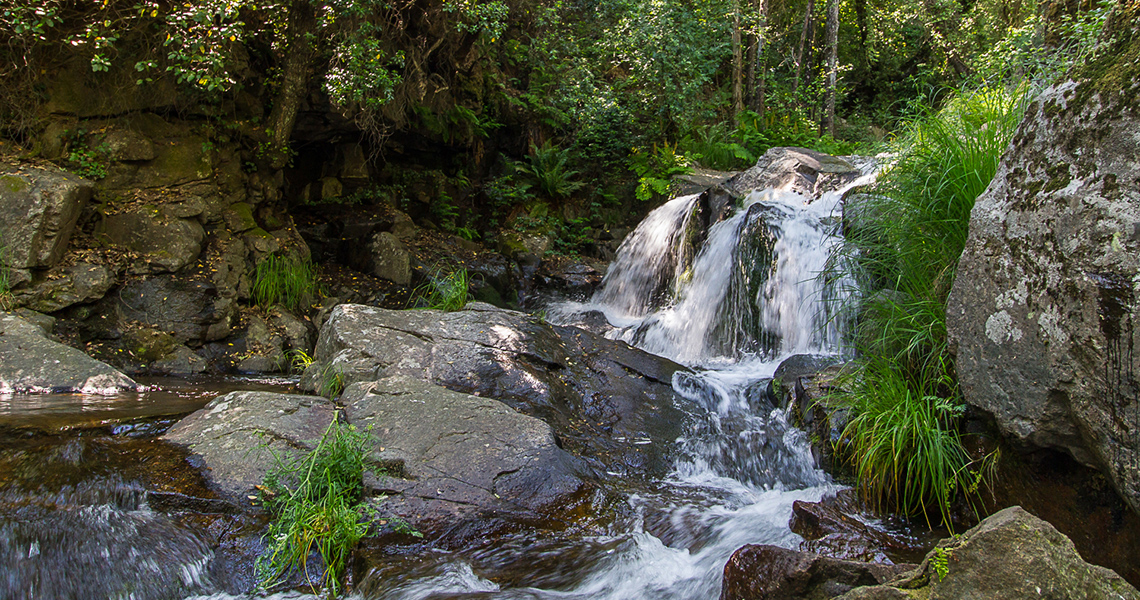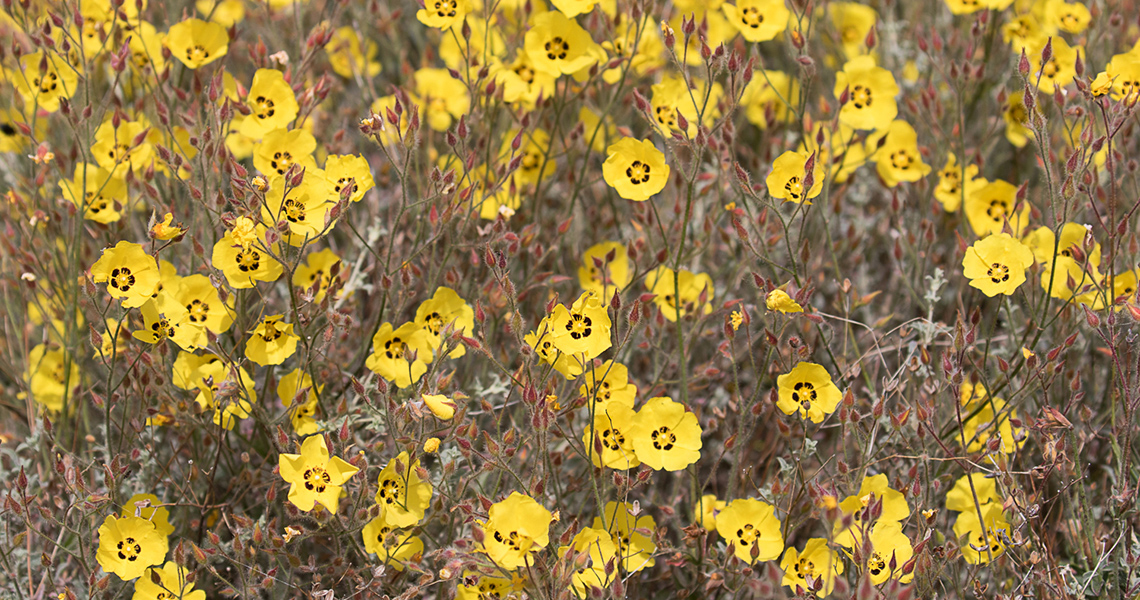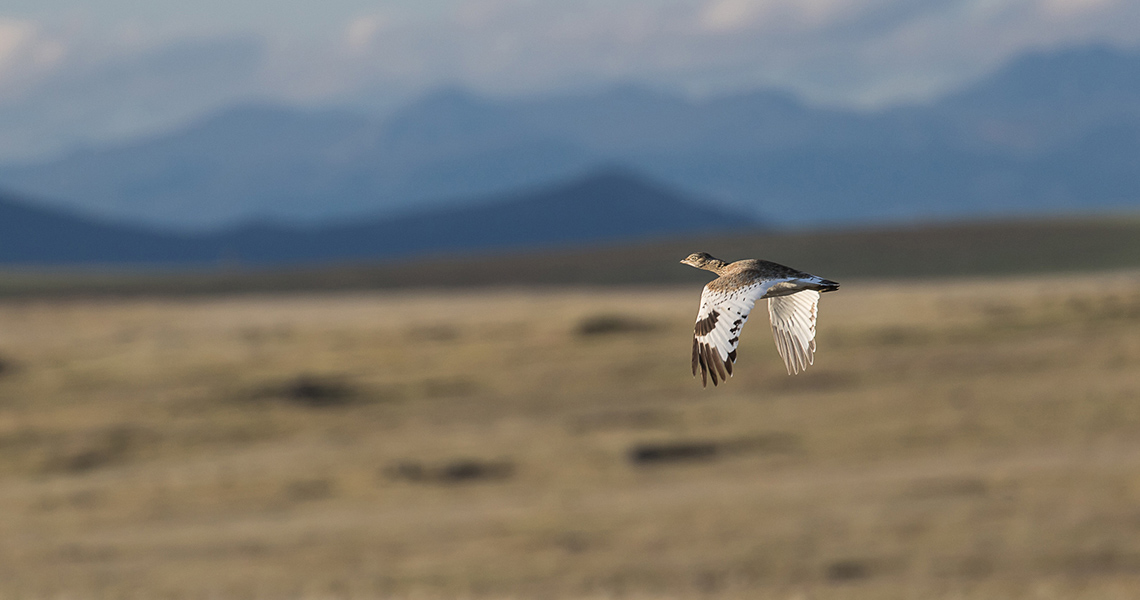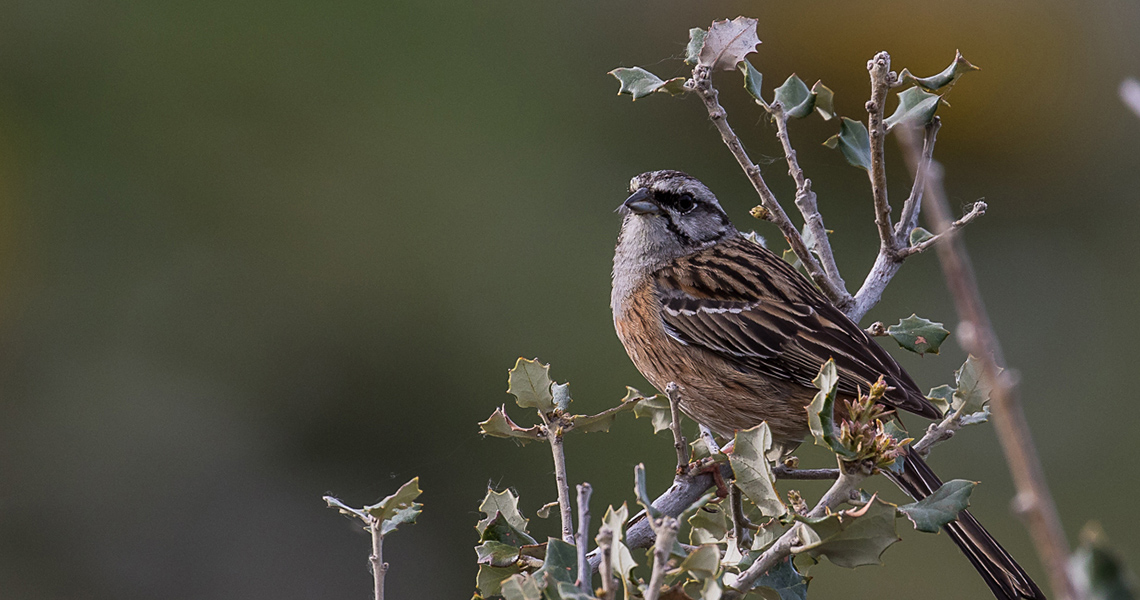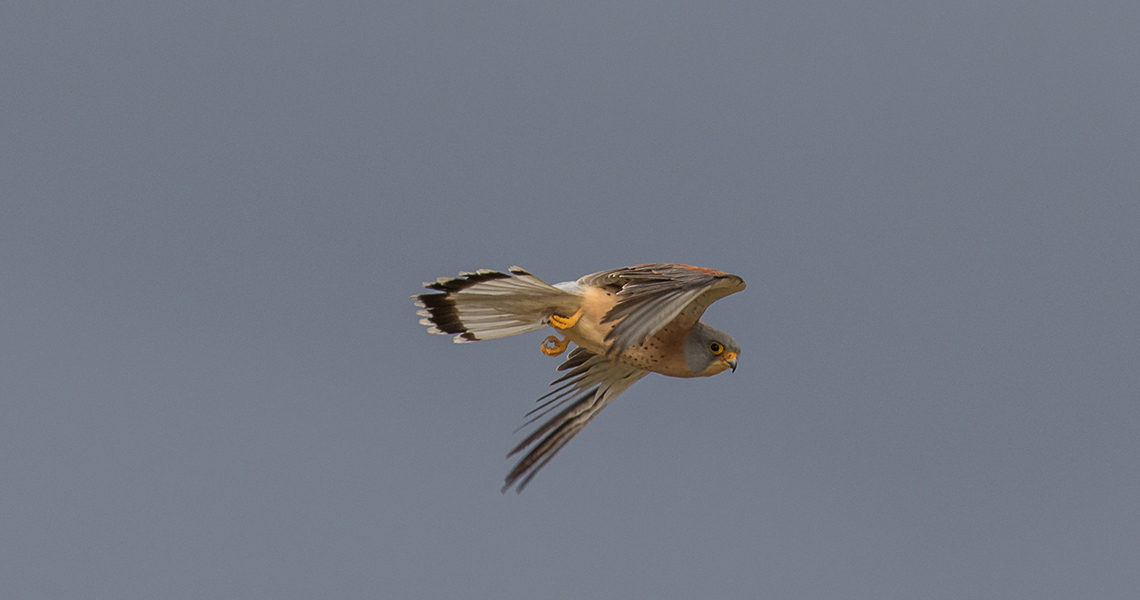Nature and Wildlife of Extremadura – by Crossbill Guides
A warm welcome to this page about the nature and wildlife of Extremadura, Spain. This website accompanies the Crossbill nature travel guide of the same name. This is an online Crossbill Guide ‘light’ for the armchair traveller. It offers some general insights and images to prepare you for your visit, plus some practical information, sites and a free route from the Crossbill Guide. Enjoy!
The autonomous region of Extremadura in west-central Spain is one of Europe’s most spectacular wildlife regions. It is world famous for its birdlife, in particular the population of raptors and steppe birds. Anyone who has ever had the privilege of travelling through Extremadura will remember the extensive ‘wild west’ landscape of endless rolling plains laced by low rocky mountain ranges – a land with lonely country roads connecting tight-packed, white-washed villages and medieval hilltop towns. A land under a wide blue sky, in which Griffon Vultures invariably cruise by, often with a Black or Egyptian Vulture, a Spanish Imperial Eagle, a Short-toed Eagle or a Black Kite for company … you get their drift.
Extremadura lies in the southern quadrant of Western Spain, between Portugal in the west, Andalucia in the south, Castilla-León in the north and Castilla-La Mancha in the east. It is geologically part of the great Iberian uplands, the mesetas, but the Extremaduran plain lies much lower than the others, which determines both the land use and wildlife. The climate is Mediterranean, with very hot summers and mild winters. But as the Extremaduran mountains form the first high land the west winds encounter, they catch quite a lot of winter rain. Extremadura is therefore by no means a harsh desert, as is often inferred from the name. In fact, it is verdant in winter and, if the rains were sufficient, very flowery in spring.
Landscape of Extremadura
Extremadura has a landscape of rolling hills – remnants of ancient mountains that are in places rocky, with schists and granite boulders. Rivers have cut small canyons in this old bedrock. Small mountain ranges lace these lowlands like arteries under the skin.
Higher mountains can be found towards the edge of the region, mostly in the north (Sierra de Gata, Las Hurdes and La Vera) and east (Sierra de las Villuercas).

The dehesa
The most typical and special ecosystem of Extremadura has no English name, nor an equivalent outside southwestern Iberia – la Dehesa. Dehesas are open woodlands of Holm Oaks and sometimes Cork Oaks (or rarely ash). This is a semi-natural landscape. All trees are carefully pruned and scrub between the trees is cleared once every few years. This gives the dehesa something of the ambiance of an orchard, but a wild and more extensive one. A dehesa stretches out for many kilometres in all directions. About half of Extremadura is covered with this landscape. Because of their size the more open dehesas resemble the African Savannah (especially in summer).
As an ecosystem, the dehesa is superb. It is home to a huge number of birds, reptiles and plants. Typical wildlife of the dehesa are Azure-winged Magpie, Hoopoe, Woodchat Shrike, Thekla’s Lark, Genet, Red Deer, Ocellated Lizard and a large variety of snakes.
Although the dehesa is, as a habitat, protected within the Natura2000 network, it was and still is agricultural land. Its land use is in itself of great interest as it, uniquely in Europe, combines forestry with animal husbandry (mostly sheep and pig rearing) and arable farming. Every once in 6-8 years, grain is planted in the dehesa.
Steppes
Like the dehesa, the steppes are a lowland habitat and are semi-natural, meaning that their openness is in part due to human influence. The steppes are vast expanses of grasslands, sometimes rocky or scrubby and always mixed with lots of herbs. Ploughed fields and plots of cereals alternate with the grassy steppes and follow a similar rotational system as the dehesa. The grassy steppes are grazed by sheep in winter, which are moved to the mountains in summer when the grass is depleted in the lowlands but at its prime in the uplands.
The steppes appear a dramatically empty landscape but their birdlife is very rich, with important populations of Little and Great Bustards, sandgrouse, larks, and raptors.
Low mountain ranges
The lower ranges are very different from the higher sierras. They are granite outcrops that rise perhaps hundred or two hundred metres above the plains. Most run roughly west to east and thus have a south and a north face. The south-face is extremely hot and dry, while the north slope is a shady, wooded cool ‘oasis’.
These small but very wild ranges are a refuge for all sorts of wildlife. This is where the raptors breed that need warm, rising air, especially Griffon Vultures.
River valleys
The river valleys are mirror images of ranges with the land plunging sharply downwards in an equally abrupt and rocky manner. And obviously, rather than dry, the atmosphere is moist.
There are countless small valleys all over the region, but only a few have rivers both large enough to carry water consistently yet small enough to have escaped the 20th century reservoir building. These mid-sized rivers are superb wildlife havens, with species of riparian woodlands, streams and, again, cliffs. The Black Stork is a typical species of these valleys.

Mountain forests and heathlands
The higher zone of Extremadura (roughly above 700 metres) is radically different from the lowlands. The people, the villages, the easy access to the land – are all different. The winters are less benign here, but summer is cooler than on the lowlands and the ground holds enough water to sustain the vegetation.
Olive groves, Chestnut groves and Pyrenean Oak forests are the dominant vegetations. The latter is the natural forest in this region. In the scrublands, various species of brooms and heaths replace the dominant cistus bushes of the lowland.
The mountains are the haunt of many plant, reptile, amphibian and butterfly species. The birdlife is more similar to that of temperate Europe.
The naturalist top 10
Ten highlights of your visit to Extremadura.
Extremadura has some of the largest raptor populations in Europe. There are many spots where you can easily watch vultures, kites and eagles.

Monfragüe National Park is the heartland of Extremadura. There are several beautiful walking trails through the Mediterranean forest.

Driving over minor country roads, you can easily explore this most unique landscape of Extremadura.

Get up at the crack of dawn to see Little and Great Bustards, Collared Pratincole, Great Spotted Cuckoo, Pin-tailed and Black-bellied Sandgrouse.

In the little visited Sierra de Gata, Las Hurdes and La Vera you have an almost endless choice of mountain trails.

One of the scenic attractions are the many castle ruins from the reconquista days that stand on the rocky hills in the countryside.

Many thousands of Cranes spend the winter in the dehesas. Watch them as they search for acorns or migrate to their night roosts on the edge of the reservoirs.

Extremadura has few marshlands, but those that are present are packed with birds. Glossy Ibis, Purple Gallinule and a large variety of herons are easy to observe.

The limestone hills in the south and near Monfragüe are the haunts of many different orchid species.

Stroll or picknick on the banks of the Extremaduran rivers and watch the terrapins between the crowfoot flowers, the bee-eaters hunting over the water or the Black Storks wade on along the water’s edge.

Birds, butterflies and wildflowers – The flora and fauna of Extremadura
Flora
Visit Extremadura Between mid-March and mid-May and the lowlands are a riot of colour. The same goes for the mountains, but here, the peak period is between mid-April and mid-June.
The flora of the dehesa is typical – highly diverse in a single spot, but little diversity between them. Purple Viper’s Bugloss (Echium plantagineum), Silene colorata, Tassel Hyacinth (Muscari comosa), Spotted Rockrose (Tuberaria guttata), Galactitis and Tolpis are typical. Among the shrubs, French Lavender (Lavendula stoechas) and Gum Cistus (Cistus ladanifer) dominate.
In the mountain woodlands, the spring flora is more diverse, with Palmate Anemone (Anemone palmata), Spanish Bluebell (Hyacintoides hispanicus), Mountain Sandwort (Arenaria montana), Pallid Narcissus (Narcissus pallidulus), Western Peony (Paeonia broteroi) and Lusitanian Milkvetch (Astragalus lusitanicus) among the eyecatchers.
Extremadura has a good, albeit not outstanding, range of orchids. The overall acidic and dry soils are not so good for orchids, which retreat to the damper and deeper soils, found along rivers. These are the haunts of Tongue (Serapias lingua) and Small Tongue Orchids (S. parviflora), Sawfly (Ophrys tenthredinifera), Champagne (Anacamptis champagneuxii) and Conical Orchid (Orchis conica). The woodlands are home to Violet Bird’s-nest (Limodorum abortivum), Long-leaved Helleborine (Cephalanthera longifolia), Green-winged (Anacamptis morio), Early-purple (Orchis mascula) and Sardinian Orchid (Dactylorhiza markusii). In the few limestone pockets, Pink Butterfly (Anacamptis papilionacea), Naked Man (Orchis italica) and a score of Ophrys-species can be found.

Birds
There are four main reasons why Extremadura is considered to be one of the top birding destinations in Europe.
First is the huge number of raptors. There are countless colonies of Griffon Vultures, large numbers of Black Vultures and a considerable population of Egyptian Vultures in the region. Short-toed and Booted Eagle breed throughout whilst Spanish Imperial, Golden and Bonelli’s Eagles are present in good numbers albeit more local. Montagu’s Harrier, Black, Red and Black-winged Kites are numerous (although the latter is not always easy to find). Even towns come up trumps here with good colonies of Lesser Kestrel.
The second reason is the large numbers of threatened steppe birds. Although many are now declining in Extremadura too, there are still sizable populations of Great and Little Bustards, Pin-tailed and Black-bellied Sangrouse, Stone Curlew, Black-eared Wheatear, and many more. Third are the healthy populations of birds of small-scale agricultural land, especially in the dehesa. Birds that are uncommon or declining elsewhere in Europe remain (very) common in Extremadura: Woodchat Shrike, Woodlark, Little Owl, Golden Oriole, Bee-eater, Thekla’s Lark, White Stork and many more. Also in this habitat is the Azure-winged Magpie, endemic to southwestern Iberia.
Finally, there are considerable numbers of marsh birds (e.g. all Iberian herons, Purple Gallinule, Glossy Ibis), rock-dwelling birds (e.g. Black Wheatear, Blue Rock Thrush) and aerial feeders (White-rumped Swift being an outstanding example). These groups are better represented in adjacent Andalucia, yet most species there, also occur in Extremadura.
Reptiles and amphibians
Extremadura is home to nine species of snakes, two each of terrapins and geckos (of which the Moorish Gecko is most common) and a large variety of lizards. Although reptiles are often shy, especially the snakes, you are likely to see a large number of them, especially if you visit between May and September. A specialty is the Ocellated Lizard, which reaches a length of 80 cms and is thereby the biggest European lizard.

Butterflies and dragonflies
Both these groups are well represented in Extremadura, although their diversity is not as great as the higher mountains in the south. Within Extremadura, the places for butterflies are in the mountains of the north and east. Two-tailed Pasha (Charaxes jasius), Nettle-Tree Butterfly (Libythea celtis) and Spanish Gatekeeper are among the more attractive species, next to a variety of heaths, blues and fritillaries. Common spring butterflies in the lowlands include Black-eyed Blue (Glaucopsyche melanops), Spanish Festoon (Zerynthia rumina)and Spanish Marbled White (Melanargia ines).
Most spring visitors arrive a little too early to experience the rich dragonfly fauna of Extremadura, which really comes alive from mid May onwards. Along the rivers, various species of demoiselles and Small Pincertail (Onychogomphus forcipatus) are common. The true specialties however, occur in the lowland rivers and smaller reservoirs, where predominantly African species have their outposts in the region. Examples are Violet Dropwing (Thrithemis annulata), Green Hooktail (Paragomphus genei) and Northern Banded Groundling (Brachythemis impartia).

Top 10 species
Ten superb plant and animal species of Extremadura.
Next to Black Kite, the massive Griffon Vulture is probably the most numerous raptor in Extremadura. In any spot with a decent view you are likely to see one or two of these majestic birds drifting by.

Although less numerous than the Griffon, the Black Vulture is nevertheless a common sight in large parts of Extremadura. This, the largest European raptor, is rare world-wide, and probably nowhere as numerous as it is in Extremadura.

One of the rarest raptors on the continent, the Spanish Imperial Eagle is restricted to the central and south-western part of the Iberian Peninsula, and is a specialised hunter of rabbits and hares. After centuries of decline, the population is on the rise again.

The Iberian Lynx is considered the rarest and most endangered feline in the world. It once lived throughout Extremadura but went extinct in the end of the 20th century. Reintroduction programs in Andalucia have brought them back into southern Extremadura.

Although Extremadura is not a region famed for its wild orchids it does have one near-endemic. The Green Tongue Orchid (Serapias perez-chiscanoi) is, with the exception of two small population just across the border in Portugal, restricted to the Guadiana basin of Extremadura.

The Azure-winged Magpie is yet another species that occurs only in the southwestern part of the Iberian Peninsula. It is very common and conspicuous in the dehesas.

The once common Little Bustard is a bird of steppes and dry arable farmland that has gone through a dramatic decline and is now largely restricted in western Europe to the Iberian Peninsula and a few dry plains in France. The Great Bustard is numerous in the steppes of Extremadura.

The Gum Cistus is (together with the Holm Oak) THE face of Extremadura. Entire hillsides are covered completely with this large-flowered cistus species with its wonderful aromatic smell.

Europe’s largest lizard is home to every warm spot in Extremadura with a bit of soft soil to dig a burrow. When it is warm, ocellated lizards are very fast and can often be seen dashing across the road.

Some of the world’s largest concentrations of wintering Common Cranes are found in the dehesas of Extremadura, where the birds feed on acorns. The birds spend the night together in large roosts and the flights to and from these spots is an unforgettable spectacle.

Routes and practicalities
In terms of access, there are two sides to Extremadura. The lowlands (steppes, dehesas) are almost exclusively private land and can only be explored on minor roads and drovers’ roads. The car is here the most logical way of moving around. In the mountains the opposite applies. Here is an abundance of tracks and trails means access to the woodlands and scrublands on foot is easy and often preferable to driving.
The best routes, both by car and on foot, are described in our Crossbill guidebook on the Extremadura.
Sustainable tourism
Extremadura has changed from one of the poorest and least appreciated backwaters of Spain to a region that receives visitors from all over the world to admire the authentic and unscathed landscape and wealth of birds. In no small part, this is thanks to ecotourism.
Ecotourism is an important pillar of sustainable economic growth in the region and has succesfully been used to conserve wildlife sites (For example Monfragüe, which almost fell prey to Eucalyptus plantations, but locally initiated, international protests prevented this and now it is one of Spain’s most popular National Parks).
The pressure from tourism on the local environment is limited, but there are a number of things to keep in mind when going to Extremadura.
Do’s
- Buy local sustainably produced products from the steppes and dehesas. Ask specifically for this (producto sostenible, producto de la dehesa). Even when store or restaurant owners consider this a strange question, it is important that people show that they care where the food comes from (even in Extremadura, mass produced foods are cheaper than the local products of the dehesa).
- Support the local nature conservation initiatives, of which there are several (e.g. nesting facilities for Rollers and Lesser Kestrels, projects combatting illegal poisoning, etc. See the list of local organisations below.
- Learn what does and doesn’t disturb wildlife. Ground-breeding birds with a nest are much more vulnerable to disturbance than a butterfly that happens to visit a flower next to where you are sitting.
Don’ts
- Keep a low profile, especially in the steppes, where sandgrouse and bustards are easily disturbed. Stay in the car when exploring steppe sites.
- There have been issues of disturbance of nests by bird photographers. Don’t be a part of the problem. Instead, book a (private) bird hide to take some of the finest images of local birds.
- Respect property rights. Trespassing is not taken lightly in Extremadura (and other parts of Spain), especially when it results in the disturbance of cattle. Also, watch dogs and fighting bulls make trespassing in the dehesa a risky undertaking.
The book
The Crossbill Guides are the most comprehensive wildlife travel guides available. Each Crossbill Guide has in depth descriptions of landscape, habitats, geology and all the species groups, with links to the best routes where this can be seen.
These routes are typically a mixture of walking trails and car routes with stops and short walks. Combined, these routes cover all the sites for birdwatching, butterflies, dragonflies, plants, mammals and reptiles. They are also set out to give you the finest examples of the ecosystems and geological features. In short, everything for nature lovers.
The Crossbill Guide covers the entire autonomous region of Extremadura.
- 288 pages
- 24 detailed routes and 22 site descriptions.
- detailed information on landscape, ecology, geology, landscape history, flora and fauna.
- Where to watch birds information
- Tips for wildlife watching and finding orchids
Our partners
Finca Flores Amarillas is an award-winning, five-star Mediterranean villa in the heart of Extremadura. Located on the sunny side of the Sierra de San Cristóbal, close to the beautiful Monfragüe National Park, it is the ideal base to explore the wildlife and landscape of the area. You can also hire the services of the experienced in-house birdwatching guide, who can show you the best kept secrets of Extremadura’s birdlife.
The villa is nestled amongst fig and olive groves, features a pool and is available for self-catering groups (12 + 4) as well as for couples who only need one room and like their breakfast being made for them.
For more information visit www.fincafloresamarillas.com

The authors
Dirk Hilbers (NL, 1976), set up the Crossbill Guides Foundation and travels Europe to research the guidebooks. This is the 17th guide he worked on. As a biologist, when not in the field, Dirk Hilbers is a free-lance writer and lecturer in the field of nature education and environmental ethics.






